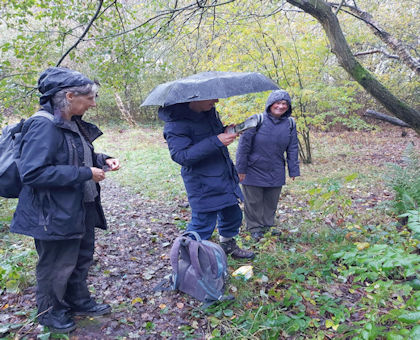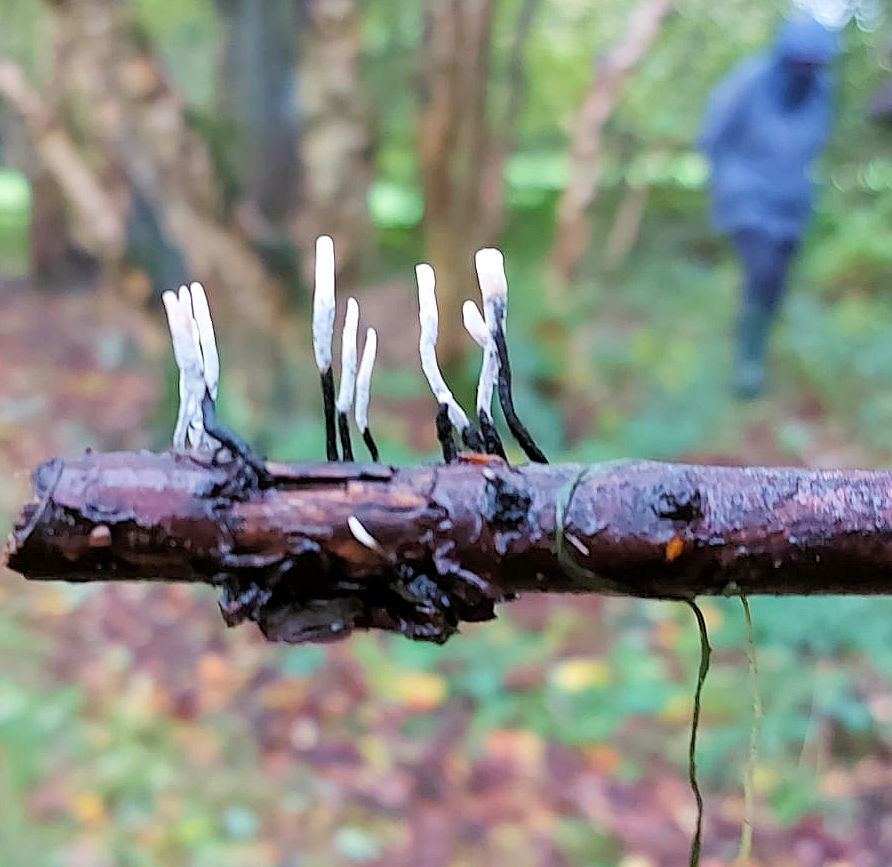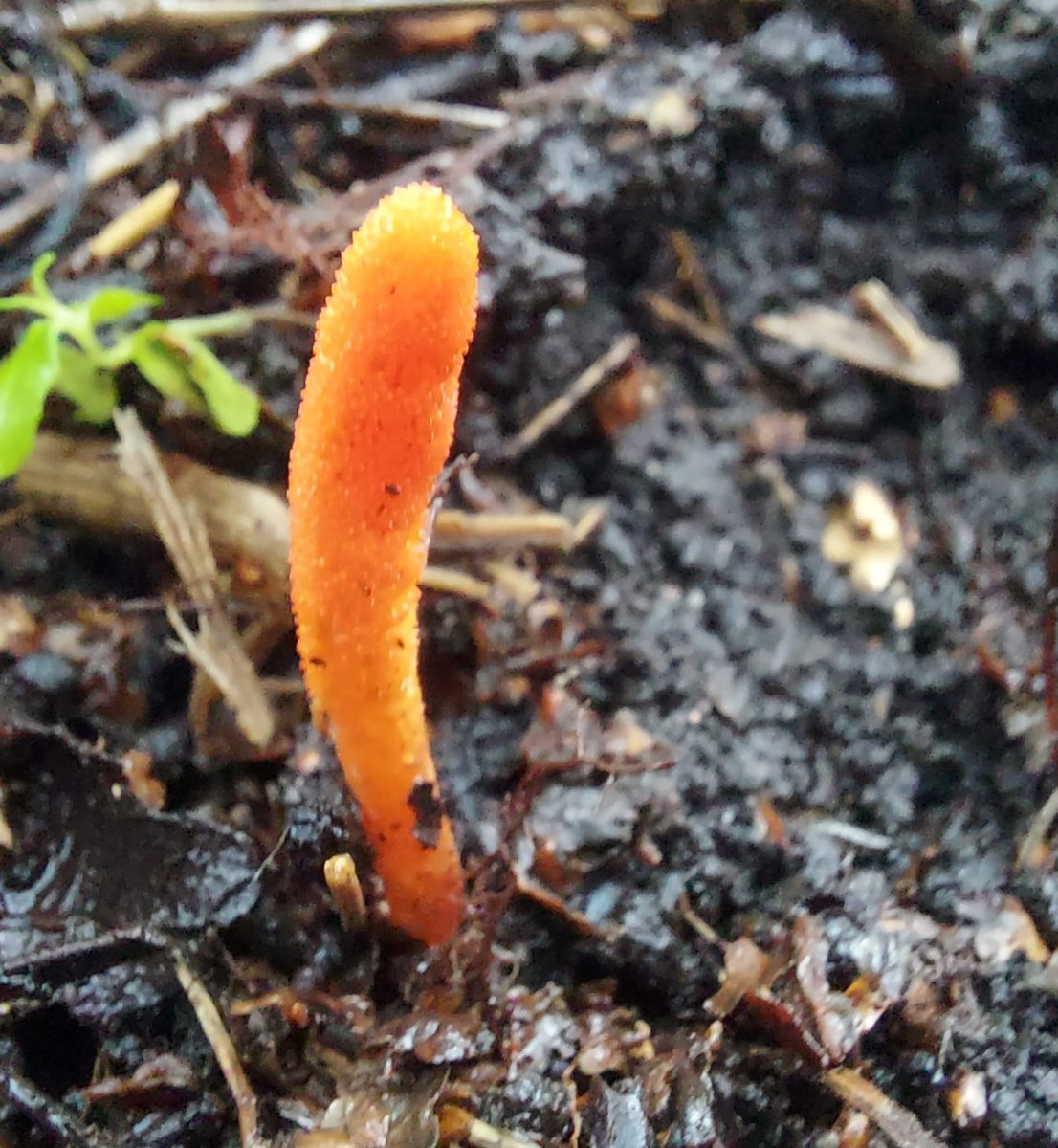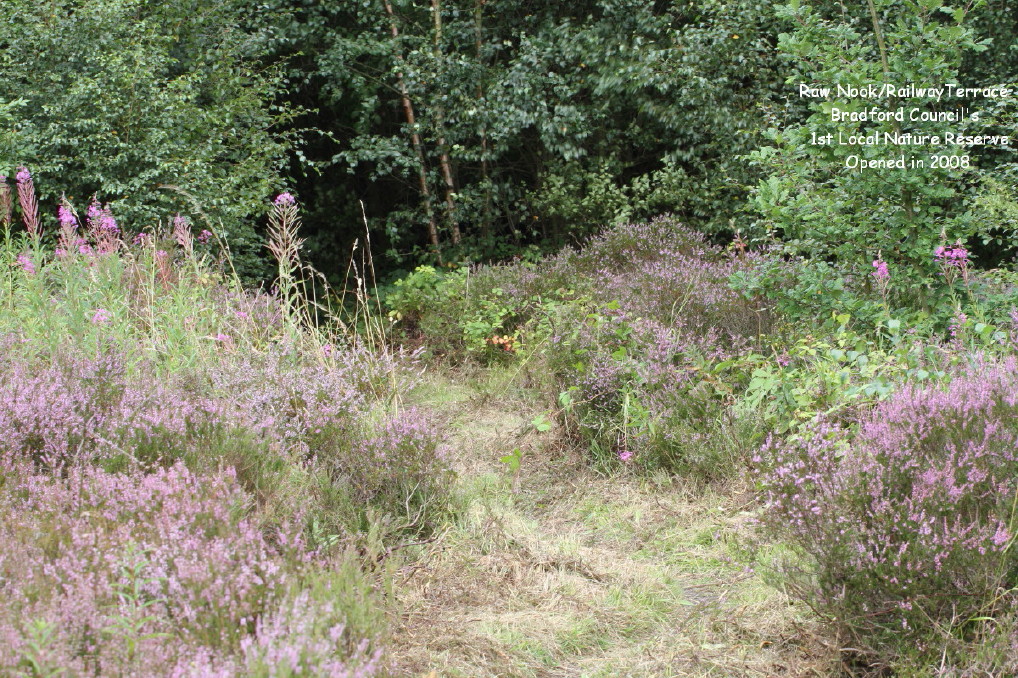
A fungi walk was arranged with the Bradford Environmental Education Service for the 24th of October at Raw Nook NR and there was a common theme…IT WAS RAINING!
But we were not deterred and while I showed the group around the site it was down to John Gavaghan who is certainly more knowledgeable on fungi than I am.
We started in the meadow area with not that much found. However, I manage to show them the lovely Saffron milk cap which found previously by YWT by a small number of Scots Pines. John gave some valuable tips to the group about firstly identifying the species of trees/habitat and then asking the question does it match with the habitat of your species ?

One of the group found a great example of the very common The Candlesnuff fungus.
What is slightly unusual here is you never really get a good view of the black base of this fungi whereas with this find you do.
Despite the rain John identified more and more species like The Fiery Milkcap which lived up to it’s name!, Blushing Bracket, Hairy Curtain Crust, Snowy Waxcaps lots of Sulphur Tuft, Brown Birch Bolete, an emerging Blusher, Deceivers, Fly Agarics (they like birch woodland), Pipe Clubs, and Lilac Bonnet.
As we walked along the path I had a trick up my sleeve. Earlier in the month YWT had found a stained turquoise coloured twig of the Green Elf cup fungus and I kept it to show the BEEs group, sadly though we didn’t find the actual fruiting body.

I knew an area by the pond which has the aptly named Ugly Milkcap. Whilst looking for this species I saw a small orange fungi sticking out of the ground. I had a good idea that it was the Scarlet Caterpillar club fungus but thankfully John confirmed the sighting.
We all managed to get photo’s and we discussed all about the species which is a parasitic fungus that grows on the larvae and pupae of moths.
By now had reached the pond but there was one more surprise a A sulphur knight was confirmed by the Oak tree.
We had not had any dinner we were soaked and reached the half away point of the reserve and sadly the decision was taken to call it a day.
However, we had found a respectable 29 different species (with a couple still not ID ) and one new species for the reserve Hairy Curtain Crust – Stereum hirsutum.
I would like to thank John for his ID skills and the rest of the group for making the walk, despite the weather a really enjoyable day.
